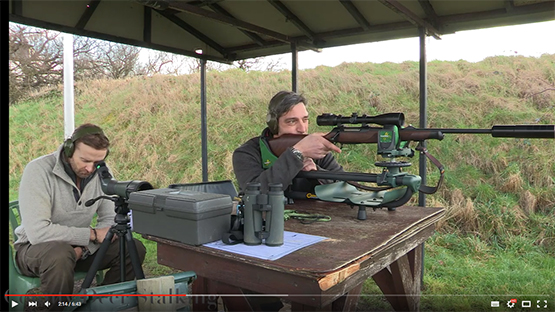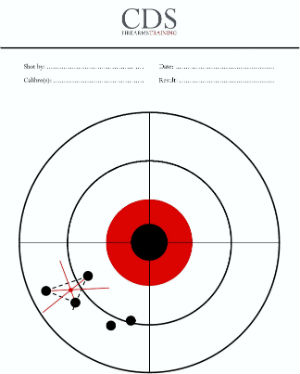James Mott explains how to zero a rifle and scope in six easy steps.
An accurately zeroed rifle is essential if you want to hit what you’re aiming at! Here’s how to properly zero a rifle from scratch with a newly fitted scope in 6 steps.
(To watch a film about how to zero a rifle go to: training-films 'How to Zero a Rifle')
Step 1. Setup a target at 100 yards. You’ll need to use a large piece of paper or card as the bullet may be some way off centre and you want to see where it lands. It is best to use a target which is marked in 1 inch or 25 mm divisions which will aid your adjustments later.
Step 2. Check that all rifle components; in particularl make sure the stock/action and scope fittings are secure and the screws are at the correct torque setting. If using a moderator, make sure it is screwed on properly and lastly make certain the barrel is clean and dry. A bore snake is effective, quick and easy to use and available from most gunshops.
Step 3. Align the scope with the barrel. If a gunsmith has fitted the scope for you he will have used a collimator and done the job for you (make sure you ask!!). If you have fitted the scope yourself, you’ll need to use the old fashioned method of removing the bolt and sighting down the bore. Setup a stable rest for the gun, sight down the bore and position the rifle so you’re looking down the bore onto the paper target. Now without touching the gun, look through the scope and adjust the crosshairs onto the centre of the target. Set your scope’s magnification to somewhere between 6 – 8 power maximum and don’t adjust it.
Step 4. Now fire your 1st shot, which should land somewhere on the target.
Step 5. Find out how far you are out of zero using a spotting scope. If you don’t have use of a spotting scope you’ll need to walk up to the target to get an accurate measurement. Now you can adjust the windage and elevation settings to suit. Each interval (“click”) on the adjustment turrets of a telescopic sight will move the point of bullet impact a specific distance at a particular range (check maker’s instructions). Remember that at 25 yards, an adjustment will require four times as many clicks than at 100 yards, e.g. if the adjustment is four clicks for an inch at 100 yards, it will be sixteen clicks for an inch of movement at 25 yards. Alternatively, at 200 yard only 2 clicks will be required.
Step 6. Now fire your 2nd shot. It should be very close on zero. Fire another 4 shots in quick succession and walk up to the target and determine your mean point of impact (MPI) which is the middle of the shot group. It is possible that you may have 1 or 2 bullets which have strayed away from the main group - this is usually down to user error, so ignore these. Mark the bullet holes and readjust the scope as required. Fire a last bullet downrange to confirm the zero.
And that’s how to zero a rifle from scratch.
Tips:
 1. To calculate the mean point of impact (MPI) draw lines between the centres of each bullet hole on the target. Then draw a line from the centre of each bullet hole across the midpoint of the opposite line. Where these second lines cross one another is the MPI.
1. To calculate the mean point of impact (MPI) draw lines between the centres of each bullet hole on the target. Then draw a line from the centre of each bullet hole across the midpoint of the opposite line. Where these second lines cross one another is the MPI.
2. Depending on the gun, ammunition used and how good a shot you are, it is possible your group size could be quite large (many people can’t produce a group under 2 inches at 100 yards). Carrying out Stage 6 (i.e. firing 5 shots to get a group) is very important EVEN if you can achieve a tight grouping. Don’t make the mistake of adjusting the scope for zero after each shot or you will be chasing your zero for a very long time!!!
3. After setting your zero, check the scope mounts/rings are still secure. Most scope fittings are fitted with screws which need either an alley key or star head to adjust. These are inexpensive to purchase, so make sure you add a set to your kit.
4. Do not zero in extreme weather conditions, a dry day with low winds is ideal
5. Do not allow anything to come in contact with the rifle barrel or moderator, including fingers wrapped around or touching the barrel.
James is the chief firearms instrictor at County Deer Stalking. If you would like to book a session with James then please contact:



















